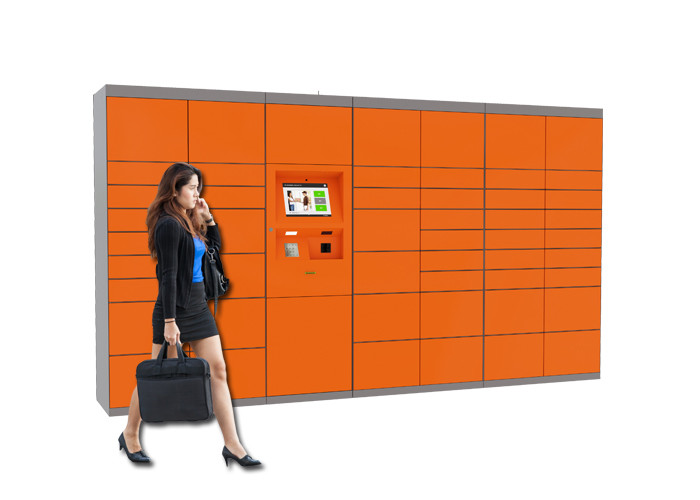Introduction:
In the ever-evolving landscape of e-commerce, Amazon has continually revolutionized the way we shop. One of their innovations, Amazon Lockers, has provided a convenient solution to the perennial problem of package delivery. However, behind the veil of convenience lies a concerning reality: the susceptibility of Amazon Lockers to hacking and unauthorized access. In this comprehensive exploration, we delve into the high-stakes world of Amazon Locker security, uncovering the risks posed by hacking and the potential implications for consumers and businesses alike.
Understanding Amazon Lockers:
Amazon Lockers represent a modern solution to the challenges of package delivery. These self-service kiosks, strategically located in public places such as grocery stores, convenience stores, and shopping centers, offer customers a secure alternative to traditional home delivery. The process is simple: customers select a nearby locker location during checkout, and once their package is delivered to the chosen locker, they receive a unique pickup code via email or text message. This code grants them access to retrieve their item at their convenience, typically within a designated timeframe.
The Appeal of Convenience:
The appeal of Amazon Lockers is undeniable. They offer a level of flexibility and security that traditional delivery methods often lack. Customers no longer need to worry about missed deliveries, stolen packages, or the inconvenience of rearranging their schedules to accommodate delivery windows. Instead, they can pick up their parcels on their own terms, knowing that their items are safely stored in a secure locker until they are ready to collect them.
However, this convenience comes with a cost: increased vulnerability to hacking and unauthorized access. As with any technology-dependent system, Amazon Lockers are not immune to exploitation by malicious actors seeking to exploit weaknesses in the system for their gain.
The Threat of Hacking:
One of the most significant risks associated with Amazon Lockers is the threat of hacking. Hackers, always on the lookout for vulnerabilities to exploit, may attempt to compromise the security of Amazon’s locker network through various means. This could involve exploiting software vulnerabilities, leveraging social engineering tactics to trick users into revealing their pickup codes, or even physically tampering with the lockers themselves to gain unauthorized access.
Phishing Attacks and Social Engineering:
Phishing attacks represent a particularly insidious threat to the security of Amazon Lockers. Hackers may craft convincing emails or text messages impersonating Amazon, prompting recipients to disclose their pickup codes or other sensitive information under false pretenses. Unsuspecting users, unaware of the deception, may inadvertently divulge their credentials, allowing hackers to access their parcels stored in Amazon Lockers and potentially compromise their personal information.
Physical Tampering and Insider Threats:
In addition to virtual threats, Amazon Lockers are also vulnerable to physical tampering and insider threats. Despite Amazon’s efforts to implement robust security measures, determined individuals may attempt to circumvent locker security through unauthorized access or tampering with the locker hardware. Moreover, insider threats pose a significant risk, as disgruntled employees or individuals with access to Amazon’s systems may exploit their privileges to facilitate unauthorized access to Amazon Lockers or compromise sensitive customer data.
Implications for Consumers and Businesses:
The implications of Amazon Locker hacking extend far beyond mere inconvenience or financial loss. For consumers, the compromise of their personal information could have devastating consequences, ranging from identity theft and fraud to invasion of privacy. Moreover, the erosion of trust in Amazon’s services could drive customers away, damaging the company’s reputation and bottom line.
For businesses, the fallout from Amazon Locker hacking could be equally severe. Beyond the potential financial losses resulting from theft or fraud, businesses could face legal and regulatory repercussions for failing to safeguard customer data adequately. Moreover, the erosion of consumer trust could have long-term implications for brand loyalty and customer retention, impacting revenue and market share.
Mitigating the Risks:
Addressing the risks posed by Amazon Locker hacking requires a multifaceted approach. Amazon must invest in robust security measures, including encryption protocols, authentication mechanisms, and regular security audits, to identify and address potential vulnerabilities proactively. Moreover, comprehensive training programs are essential to educate both customers and employees about the importance of cybersecurity awareness and best practices for safeguarding sensitive information.
Furthermore, collaboration with cybersecurity experts and industry stakeholders is crucial to staying ahead of emerging threats and implementing effective countermeasures. By leveraging collective expertise and resources, Amazon can strengthen its defenses against hacking attempts and ensure the continued integrity and reliability of its locker network.
Conclusion:
The vulnerabilities of Amazon Lockers to hacking and unauthorized access represent a significant challenge for both consumers and businesses. While the appeal of convenience remains undeniable, it is essential to recognize the inherent risks associated with relying on technology-dependent solutions such as Amazon Lockers. By understanding these risks and implementing robust security measures, Amazon can mitigate the threat posed by hacking and safeguard the trust and confidence of its customers and partners in the ever-evolving landscape of e-commerce.

(FAQ)
- What are Amazon Lockers?
Amazon Lockers are self-service kiosks located in public places such as grocery stores, convenience stores, and shopping centers. They provide a secure alternative for receiving Amazon packages, allowing customers to pick up their parcels at their convenience. - How do Amazon Lockers work?
Customers select a nearby locker location during the checkout process on Amazon’s website. Once their package is delivered to the chosen locker, they receive a unique pickup code via email or text message. This code grants them access to retrieve their item from the locker. - Are Amazon Lockers secure?
Amazon Lockers are designed to be secure, with features such as sturdy construction, electronic locks, and surveillance cameras. However, like any technology-dependent system, they are not immune to potential security risks. - What are the potential security risks associated with Amazon Lockers?
Some potential security risks include hacking attempts, phishing attacks, physical tampering, and insider threats. Hackers may attempt to exploit vulnerabilities in the locker’s software or network infrastructure, while phishing attacks could trick users into disclosing their pickup codes. - How can I protect myself from security risks when using Amazon Lockers?
To protect yourself, it’s essential to remain vigilant and be cautious of any suspicious emails or text messages claiming to be from Amazon. Avoid sharing your pickup code or other sensitive information with anyone, and report any unusual activity or signs of tampering with the lockers to Amazon immediately. - What measures does Amazon take to secure its locker network?
Amazon implements various security measures, including encryption protocols, authentication mechanisms, regular security audits, and surveillance cameras to monitor locker locations. Additionally, Amazon collaborates with cybersecurity experts and industry stakeholders to stay ahead of emerging threats. - What should I do if I encounter a problem with an Amazon Locker?
If you encounter any issues with an Amazon Locker, such as difficulty retrieving your package or signs of tampering, you should contact Amazon customer service for assistance. They can help troubleshoot the problem and ensure the security of your package. - Can I trust Amazon Lockers with sensitive packages?
While Amazon Lockers are generally secure, it’s essential to consider the nature of the items you’re having delivered. Avoid using lockers for highly sensitive or valuable packages if possible, and consider additional security measures such as insurance or signature confirmation for added peace of mind. - Are there any alternatives to Amazon Lockers for package delivery?
Yes, there are alternative delivery options available, such as home delivery, Amazon Hub Counter pickup locations, and Amazon Key for in-home delivery. It’s essential to weigh the pros and cons of each option based on your individual needs and preferences. - Where can I find more information about Amazon Lockers and their security?
For more information about Amazon Lockers and their security measures, you can visit Amazon’s official website or contact Amazon customer service for assistance. Additionally, you can consult online resources and cybersecurity experts for tips and best practices on staying safe when using Amazon Lockers.






